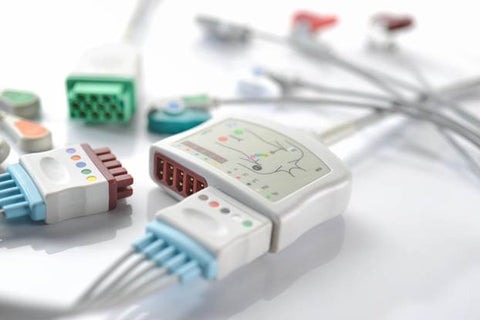Electrocardiography (ECG) remains one of the most important diagnostic tools in modern healthcare, offering a quick, reliable way to monitor heart activity. At the core of this technology are ECG Cables, which serve as the vital connection between the patient and the monitoring equipment. For biomedical technicians, clinical engineers, and procurement managers, understanding the role, maintenance, and selection of ECG cables is essential to ensuring accurate readings and uninterrupted patient care.
Why ECG Cables Are Essential
ECG systems function by detecting electrical signals from the heart through electrodes placed on the patient’s body. These signals are then transmitted via ECG cables to the machine, which interprets and displays them as waveforms. Without reliable cables, even the most advanced ECG machine cannot produce accurate results.
The quality of the cable impacts:
- Signal Clarity: Poor connections or degraded cables can cause noise and distorted readings.
- Patient Safety: Damaged cables can create electrical risks or fail during critical monitoring.
- Operational Efficiency: Malfunctioning accessories delay procedures and require immediate troubleshooting.
Common Challenges with ECG Cables
Over time, ECG cables are exposed to conditions that can reduce their effectiveness. Common issues include:
- Wear and Tear: Frequent handling and repeated plugging/unplugging cause connector degradation.
- Fluid Exposure: Accidental spills or exposure to cleaning agents can corrode connectors.
- Improper Storage: Tangled or twisted cables may lead to internal wire damage.
- Cross-Compatibility Issues: Not all cables are universally compatible with every ECG machine model.
These challenges highlight the importance of regular inspection and proactive replacement strategies in clinical settings.
Importance of Routine Inspection
Biomedical technicians play a crucial role in ensuring cables remain in optimal condition. Best practices include:
- Visual Checks: Inspecting for cracks, frayed insulation, or discoloration.
- Connector Integrity: Ensuring connectors fit snugly and securely.
- Electrical Testing: Using diagnostic tools to verify cable performance and rule out hidden faults.
- Labeling and Tracking: Assigning unique IDs to cables to track usage and replacement cycles.
Routine inspections reduce unexpected failures during patient monitoring and improve overall equipment reliability.
Selecting the Right ECG Cable
When replacing or stocking ECG cables, procurement managers and technicians should consider:
- Compatibility: Always match cables with the specific brand and model of ECG device.
- Durability: Look for cables designed with reinforced insulation and strain relief features.
- Ease of Cleaning: Cables should be resistant to disinfectants and frequent cleaning cycles.
- Regulatory Compliance: Ensure cables meet healthcare safety standards such as ISO and IEC.
- Supplier Reliability: Partner with vendors known for quality assurance and consistent supply.
These factors help maintain uninterrupted patient diagnostics and reduce the risk of misdiagnosis.
The Technician’s Perspective
For HTM departments, downtime caused by faulty ECG cables isn’t just inconvenient—it can compromise patient outcomes. Technicians often advocate for:
- Maintaining Spare Inventory: Stocking backup cables to ensure immediate replacement.
- Scheduled Replacement: Rotating cables on a preventive schedule rather than waiting for failure.
- Standardization: Using uniform cables across departments where possible to streamline compatibility.
- Training Clinical Staff: Educating end-users on proper handling and storage to extend cable lifespan.
This proactive approach helps healthcare facilities avoid unnecessary delays and service interruptions.
Best Practices for Extending Cable Life
While ECG cables are consumable items, adopting best practices can significantly extend their service life:
- Proper Storage: Use cable organizers to prevent tangling and bending.
- Gentle Handling: Avoid pulling on cables during removal; always disconnect via the connector.
- Regular Cleaning: Follow manufacturer guidelines for disinfection to prevent material breakdown.
- Environment Awareness: Keep cables away from extreme temperatures and moisture.
These habits not only improve durability but also support better clinical workflow efficiency.
Conclusion
In today’s healthcare environment, where accuracy and efficiency are paramount, ECG cables serve as the unsung heroes of diagnostic monitoring. Their reliability directly impacts patient outcomes, and their proper selection and maintenance are critical responsibilities for biomedical equipment teams. By prioritizing quality, compatibility, and proactive replacement, healthcare facilities can ensure uninterrupted service and precise cardiac monitoring.
For healthcare organizations seeking dependable accessories and support, THE BIOMED GUYS provide trusted solutions tailored to the needs of clinical engineering and HTM departments, ensuring that essential diagnostic equipment performs flawlessly when it matters most.


